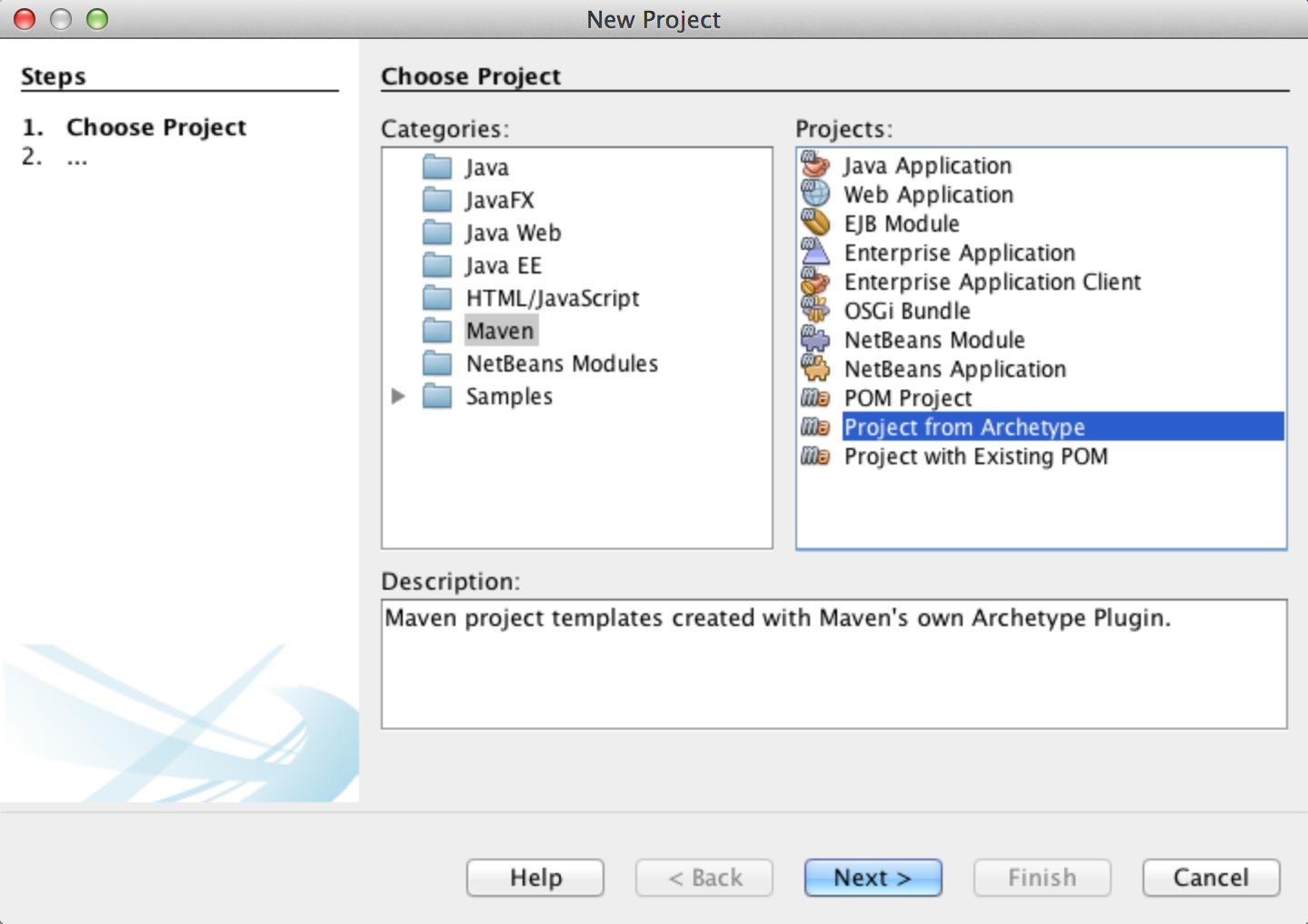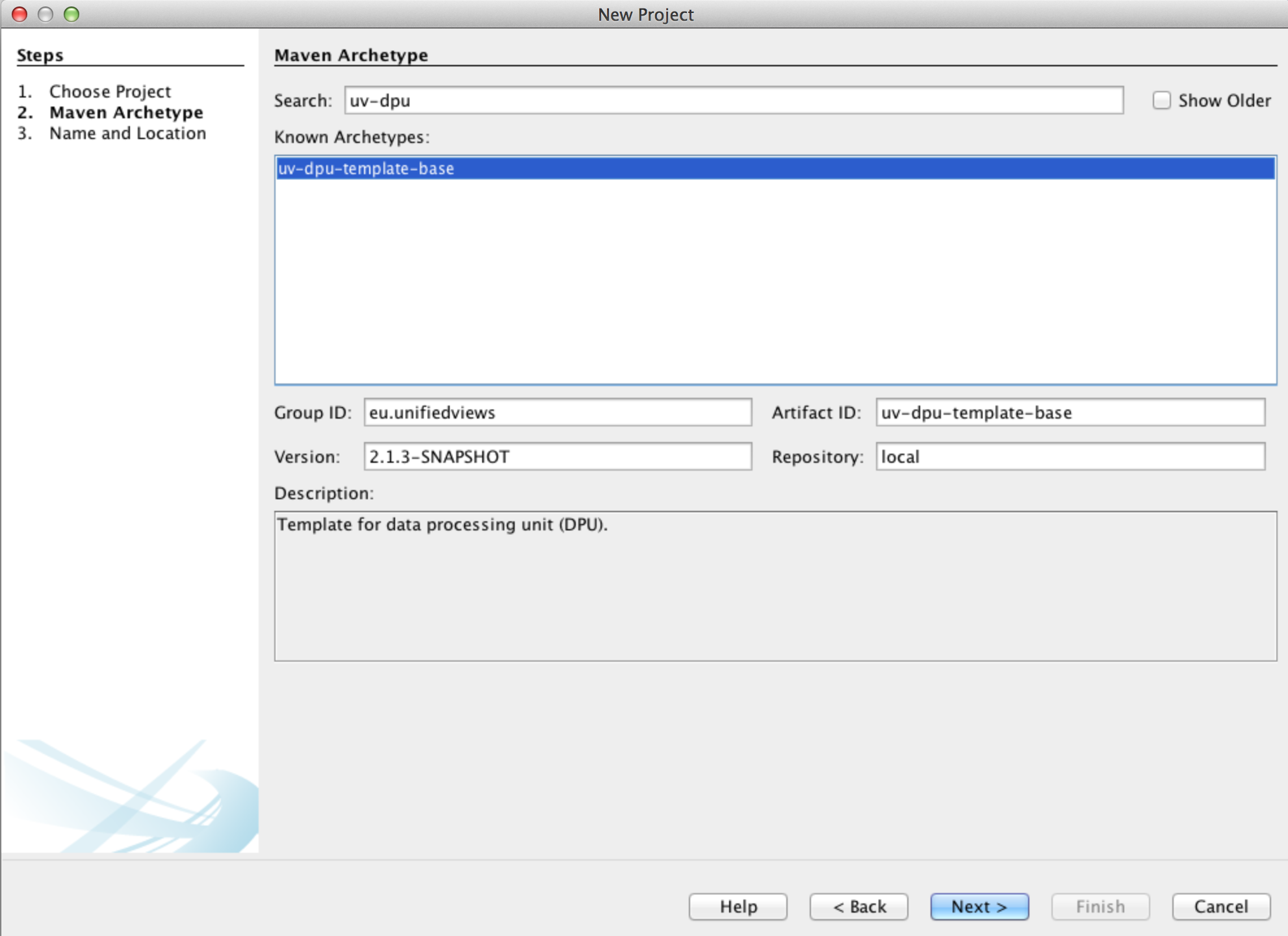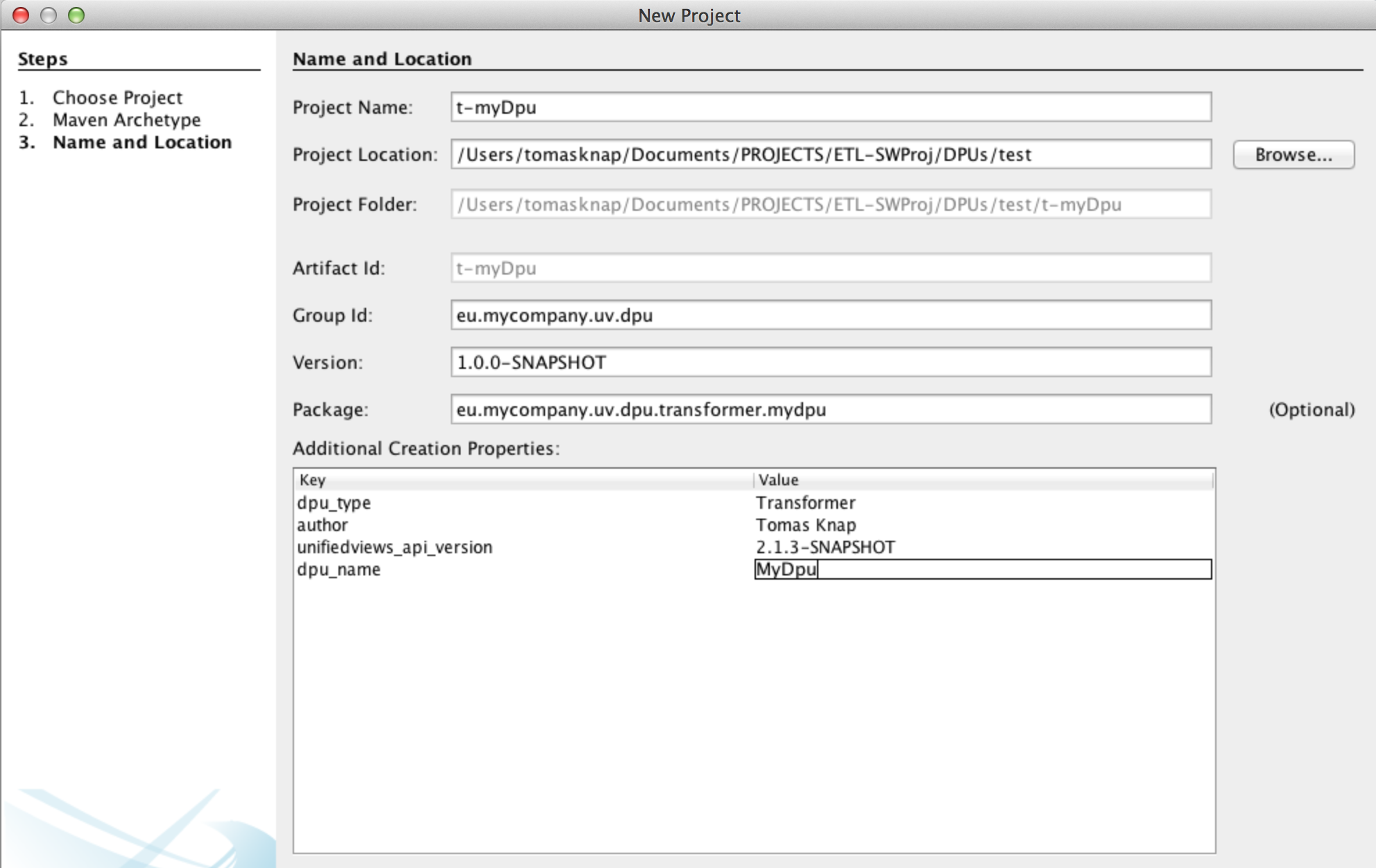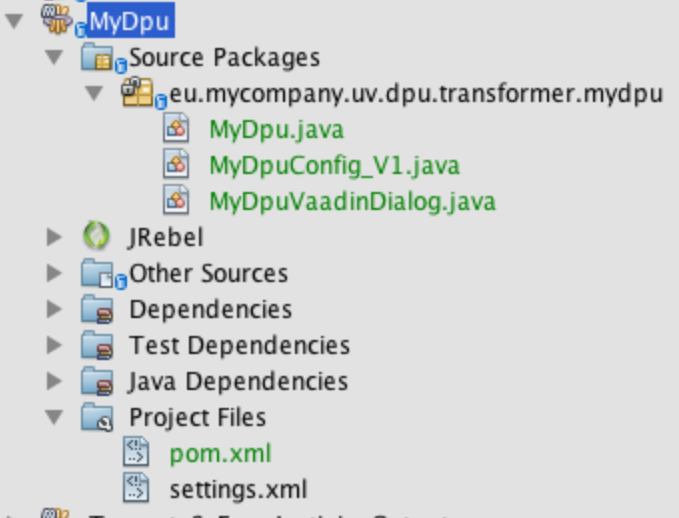Creating a New DPU Using the Netbeans IDE
Creating a New DPU Using the Netbeans IDE
This section contains a short guide on how to use the Netbeans IDE for DPU development.
In order to set up the Netbeans IDE, follow these steps:
Open the Netbeans IDE, Create new project, select Maven, Project from archetype.

Find the archetype named uv-dpu-template-base. Check that the version is the required version of UnifiedViews API. (Every release of UnifiedViews Core has also information about the used UnifiedViews API). Click Next.

Fill in basic information:
Project Name: this value is used as name of the project directory. Project name is also used as a Maven artifact ID, which is the unique Maven identifier of the DPU created.
Project Location: choose an arbitrary location of the project on your filesystem.
Artifact Id: automatically prefilled based on project name.
Group Id: Maven group ID for the prepared DPU. In general, all your developed DPUs should use the same Maven Group ID.
Suggested pattern: For company with homepage 'mycompany.eu', use 'eu.mycompany.uv.dpu'.
Version: You may keep as it is. So the initial version of the DPU will be 1.0-SNAPSHOT
Package: Java package in which the DPU classes will reside.
Suggested form of package name: {group id}.{type in lowercase}.{dpuName lowercase}
Additional Creation Properties:
dpu_type: Every DPU is of a certain DPU type. Please specify one of the following values:
Extractor
Transformer
Loader
Quality
unifiedviews_api_version: This is the version of the API, the DPU is built against. Do not change unless you know what are you doing.
author: Name of the DPU author. This value is inserted into comments for all generated classes.
dpu_name: Please specify the name of the DPU. This value is used as name of base DPU classes
Suggested pattern CamelCase with big initial letter, example, 'MyDpu'. Use only names which may be used as Java class names.

Check the prepared values. Click Finish. As a result, new project is prepared, with Core classes being already generated.

For further explanation of the generated files, please see: Explaining the Core DPU Files Generated by the DPU Template
You can also build the DPU (as it is) and try to import it to UnifiedViews UI, see: Creating a New DPU Using the Netbeans IDE